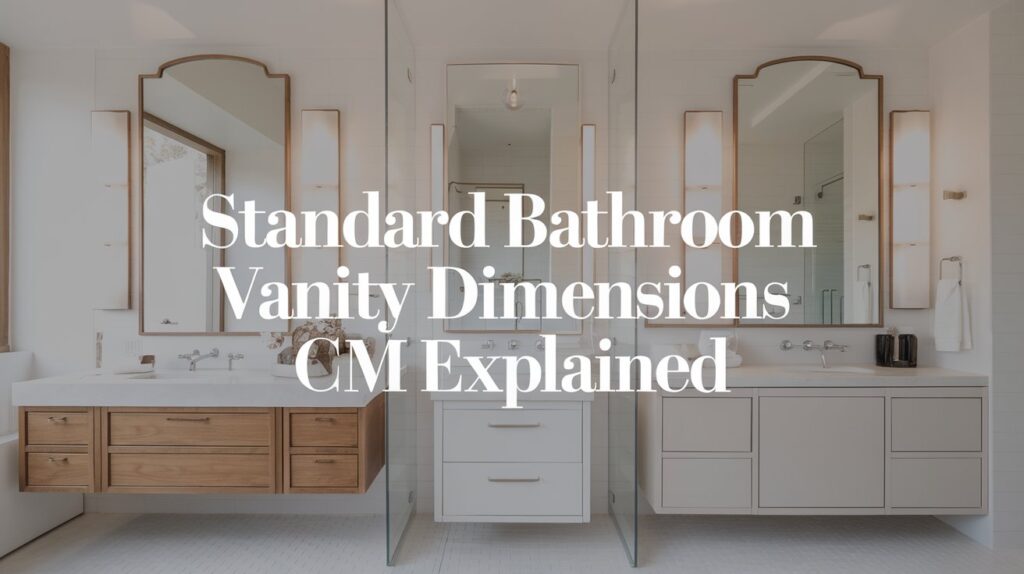You can feel overwhelmed when you shop for a bathroom vanity and feel confusion when you look at bathroom vanity measurements with the goal to compare and figure out which will fit in your space.
That’s why I prepared this guide about bathroom vanity dimensions cm.
Here, I will show you the exact sizes for single, double, corner and custom vanities, plus how to measure out your space correctly.
No elaborate terminology. No complicated math. Just simple numbers you can use right away.
By this point, you should know which of these vanities is right for you.
What is a Bathroom Vanity?
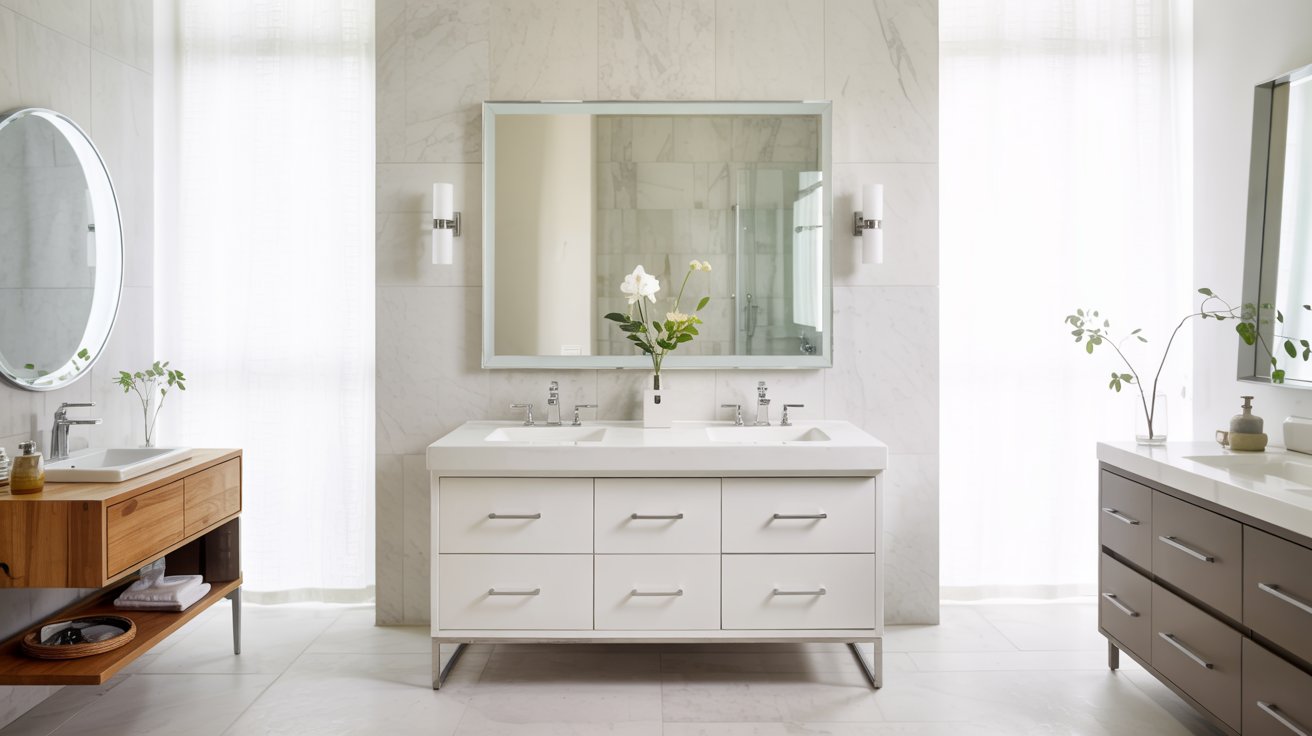
A bathroom vanity combines a countertop, sink, and storage cabinet into one unit. The countertop holds your sink, while cabinets below store towels and toiletries. Many include mirrors and lighting fixtures.
Different styles suit different spaces. Single-sink vanities work in small bathrooms. Double-sink vanities fit master bathrooms where two people get ready together. Corner vanities use tight corner spaces efficiently. Floating vanities mount to walls for a modern look. Freestanding vanities sit on the floor like traditional furniture.
Choose based on your bathroom size and how many people use the space.
Standard Bathroom Vanity Dimensions
Knowing standard sizes helps you plan your bathroom layout and shop smarter. Most vanities follow similar measurement ranges.
Width, Depth, and Height
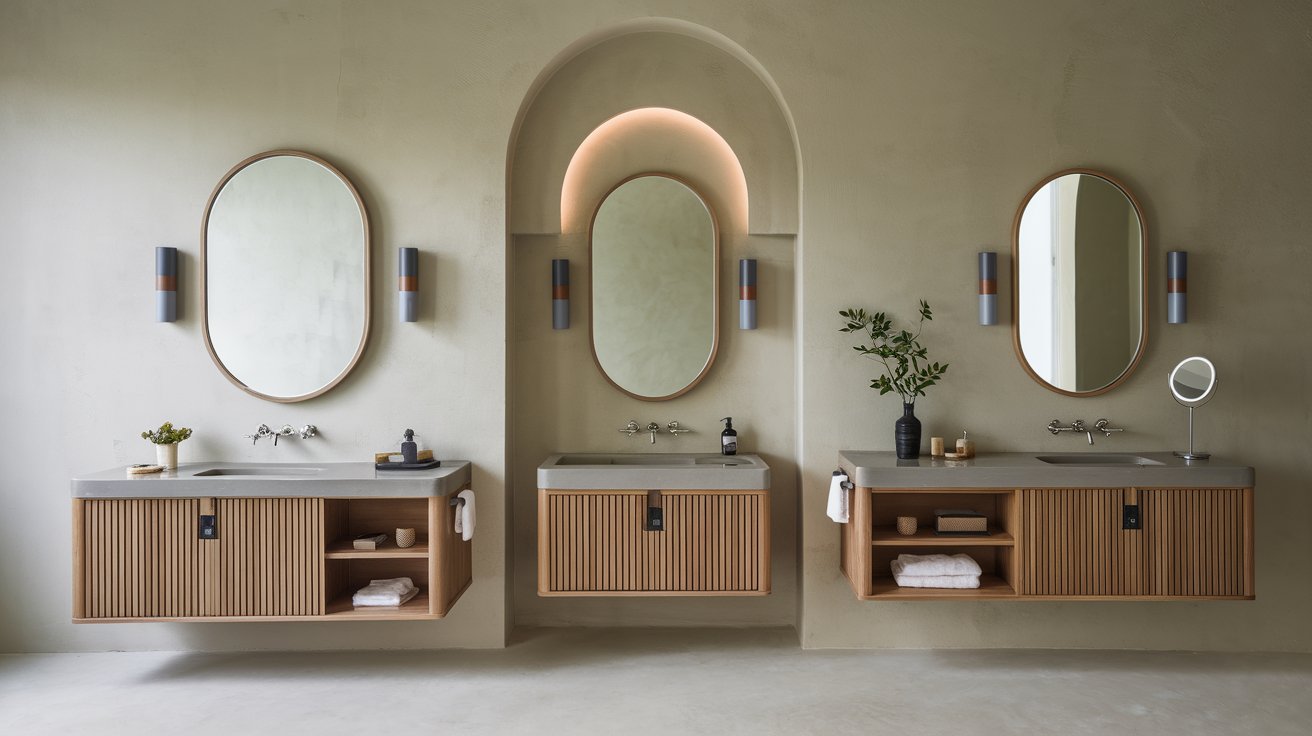
Bathroom vanities come in fairly predictable size ranges.
Width varies the most. Single vanities typically measure 60 to 121 cm wide. Double vanities range from 152 to 182 cm, though some reach 244 cm or more.
Depth stays more consistent. Most vanities measure 50 to 60 cm deep from front to back. This depth provides enough counter space without jutting too far into the room.
Height typically falls between 76 and 91 cm. The standard is around 86 cm, similar to kitchen counter height. This comfortable range works for most adults.
These measurements serve as your starting point when planning.
Single-Sink Vanity Dimensions Cm
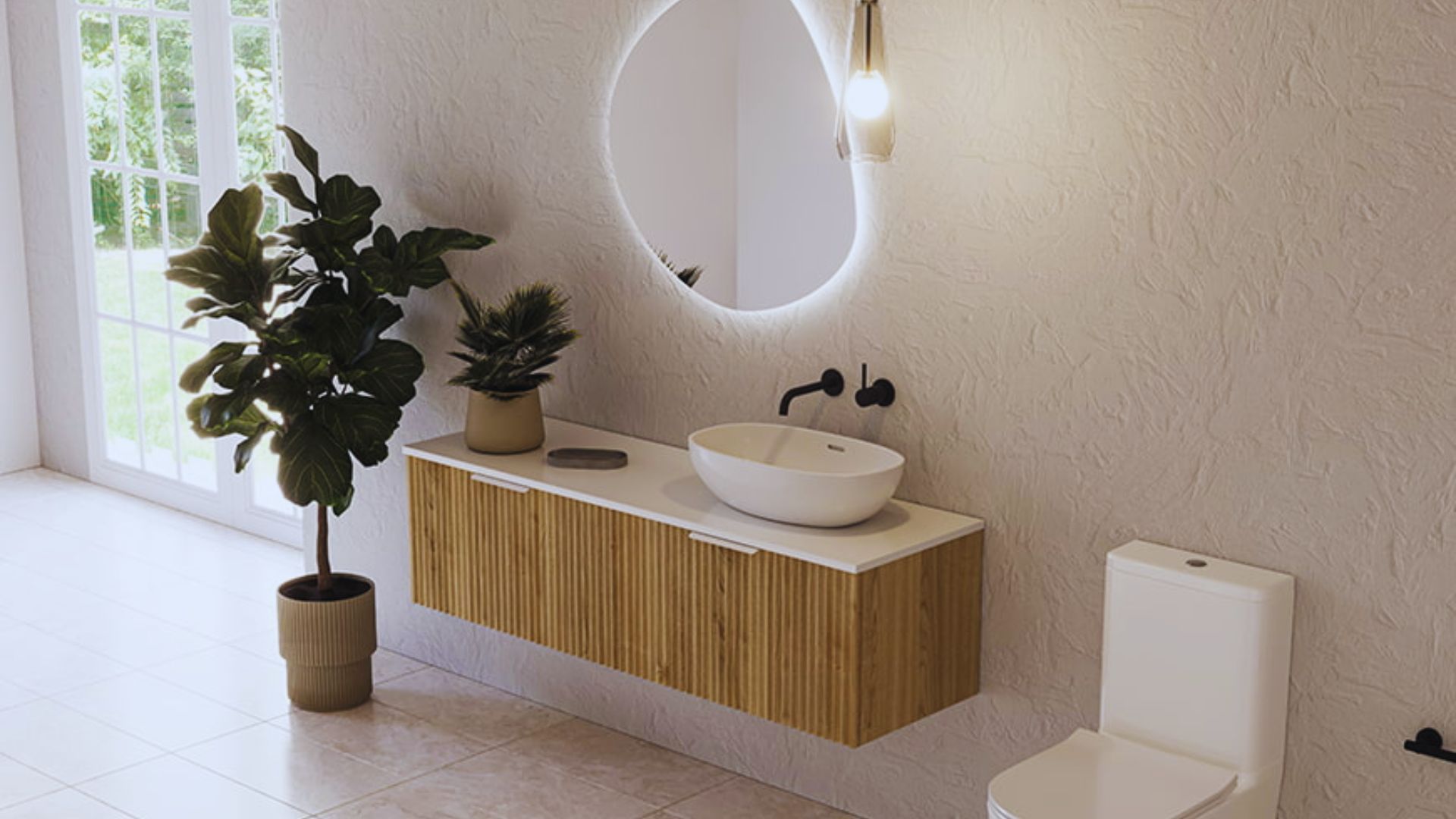
Single vanities come in several common widths to fit different spaces.
53 cm wide vanities work in the smallest bathrooms. They’re compact but functional.
76 cm wide units offer more counter space. Good for everyday use in guest bathrooms.
91 cm wide vanities provide comfortable room for toiletries and décor. Popular in full bathrooms.
107 cm wide options give generous counter area. They work well in medium-sized spaces.
122 cm wide single vanities feel spacious. They offer plenty of storage despite having just one sink.
Most single vanities maintain that standard 50 to 60 cm depth. Height usually sits at 86 cm.
These sizes work perfectly in compact bathrooms, powder rooms, and guest spaces. One person can use them comfortably without feeling cramped.
Double-Sink Vanity Dimensions Cm
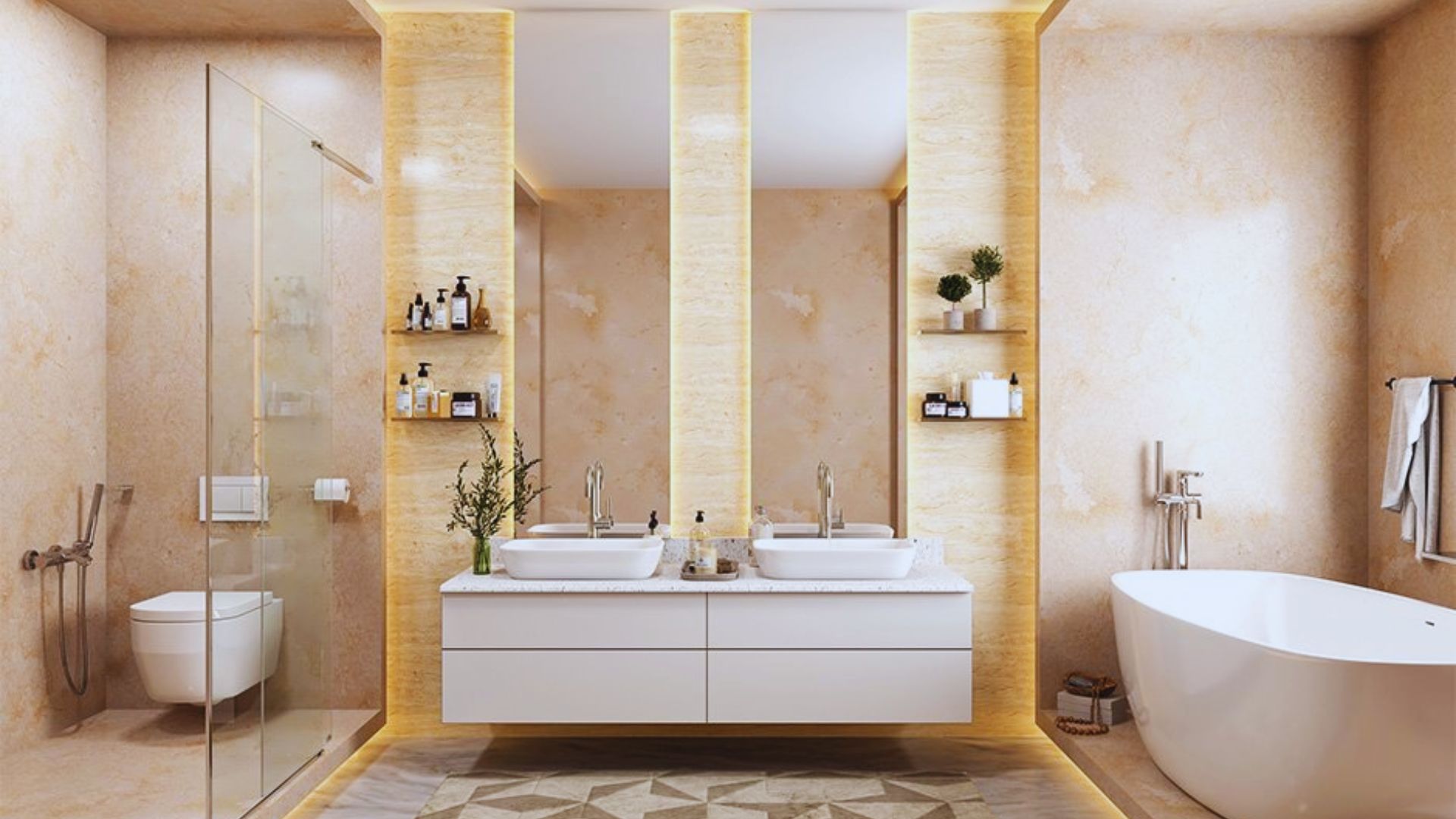
Double vanities need significantly more width to accommodate two sinks comfortably.
152 cm wide is the minimum for double sinks. This gives each person about 76 cm of space. It feels tight but works in smaller master bathrooms.
183 cm wide vanities offer better spacing. Each person gets around 91 cm, which feels more comfortable.
244 cm wide units provide luxurious space. You can spread out toiletries and never feel crowded.
The depth stays at 50 to 60 cm, just like single vanities. This keeps the unit from dominating the room.
Height remains 76 to 91 cm for consistency with other bathroom fixtures.
Double vanities shine in shared bathrooms. Two people can get ready simultaneously without bumping elbows or competing for mirror space.
Corner Vanity Dimensions Cm
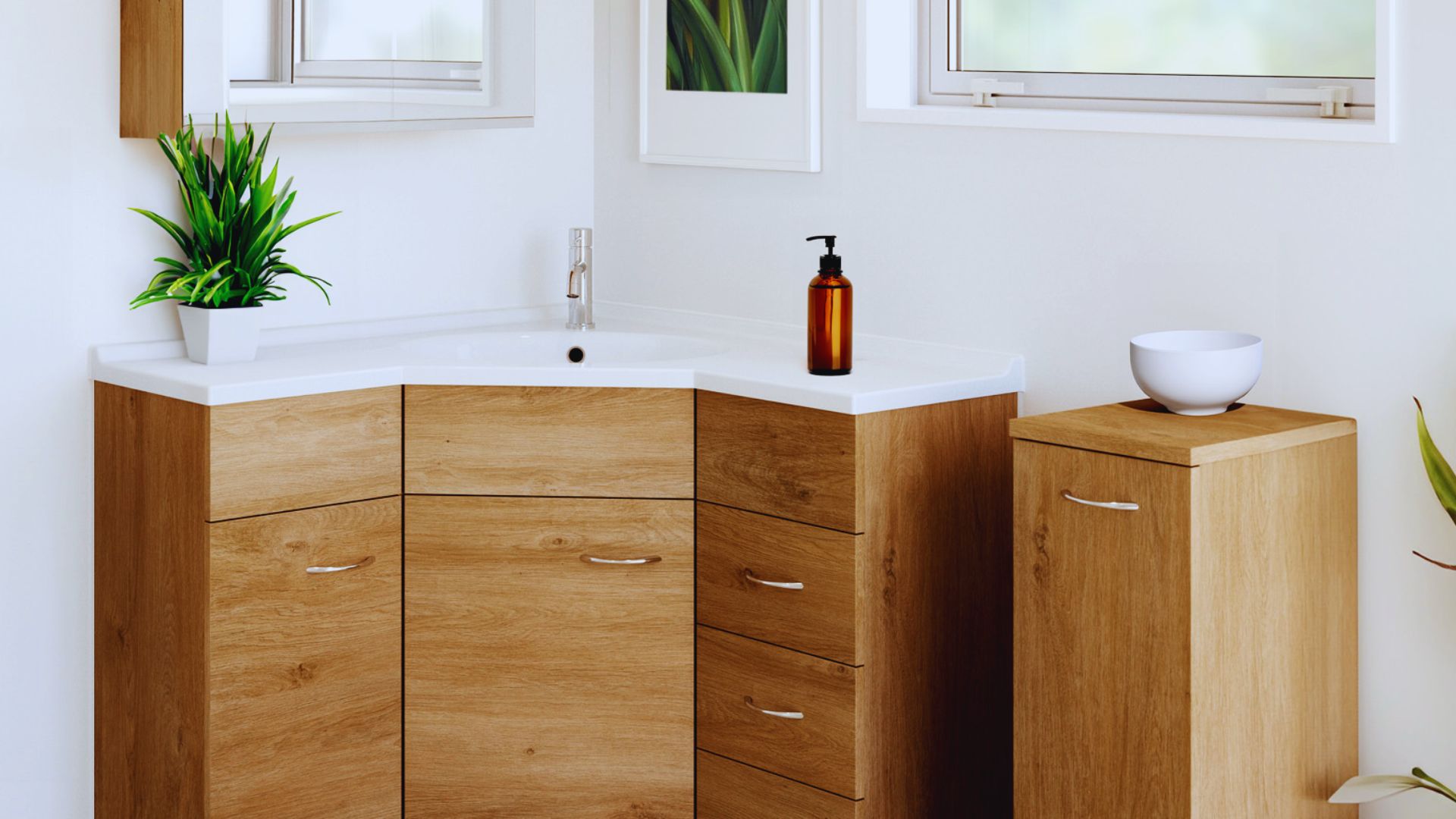
Corner vanities solve tricky layout problems by using space that typically goes unused.
These units measure 91 to 107 cm along each wall. They form a triangular or diagonal shape that tucks into the corner.
The design maximizes that awkward corner area. You gain counter space and storage without blocking pathways.
Depth at the deepest point reaches about 60 cm. This tapers down toward the walls.
Height follows the standard 76 to 91 cm range.
Corner vanities work wonderfully in small bathrooms, odd-shaped rooms, or when you need to preserve floor space. They’re especially helpful in basement bathrooms or converted closets.
Custom Vanity Sizes
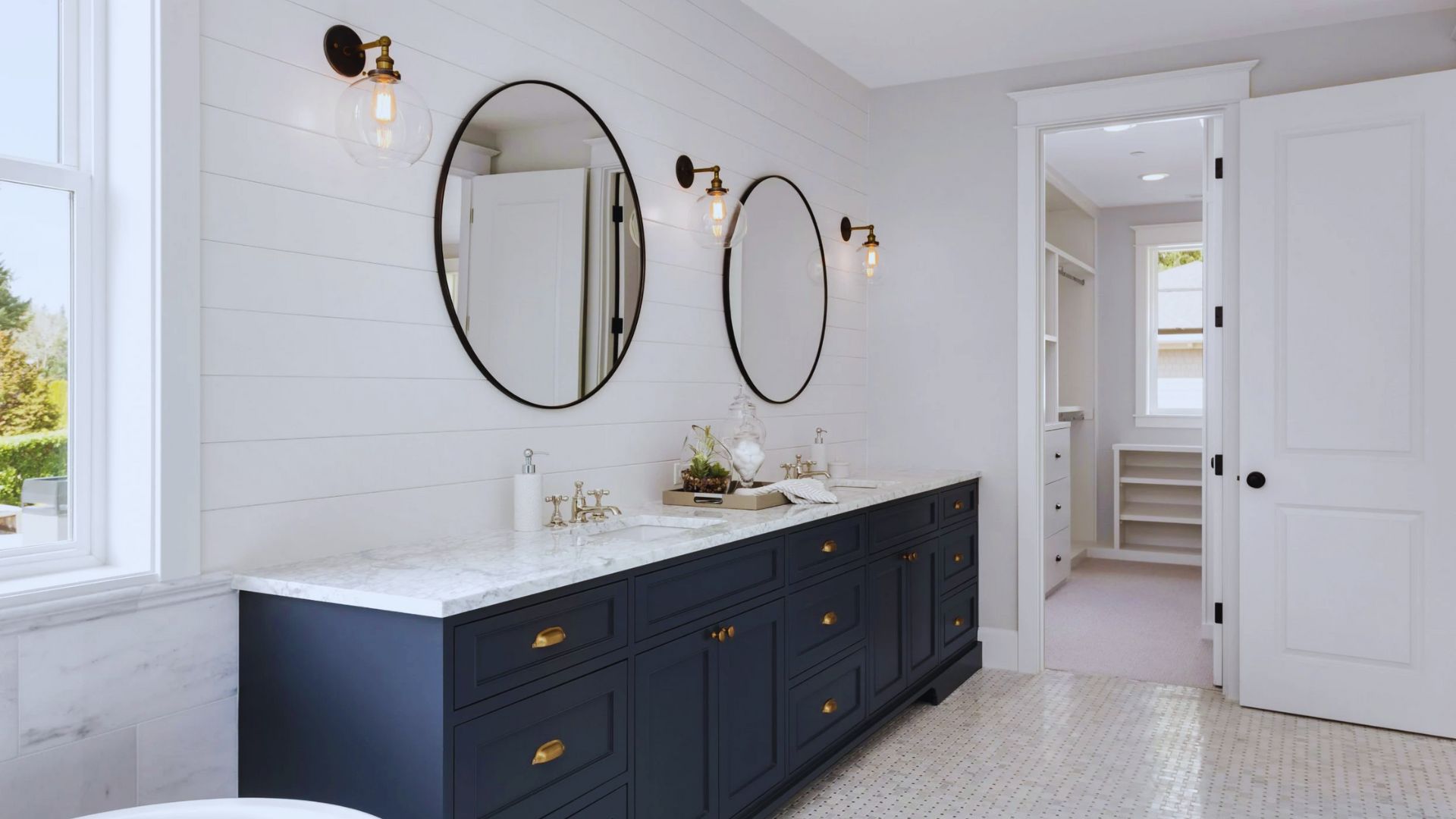
Sometimes standard sizes just won’t work for your space.
Custom vanities are built to your exact specifications. Maybe your bathroom has an unusual width, or plumbing lines sit in odd places. Perhaps you want extra height for tall family members.
Custom units can be any size you need. They fit irregular spaces perfectly.
Professional measurement is critical for custom work. Even a few centimeters off can cause major installation problems. The measurements must account for plumbing, electrical outlets, and door swings.
Professional installation ensures everything fits correctly. Custom vanities often cost more, but they solve problems standard sizes can’t.
Consider custom when renovating historic homes, working with unique architecture, or creating a truly personalized bathroom.
Factors Affecting Vanity Dimensions
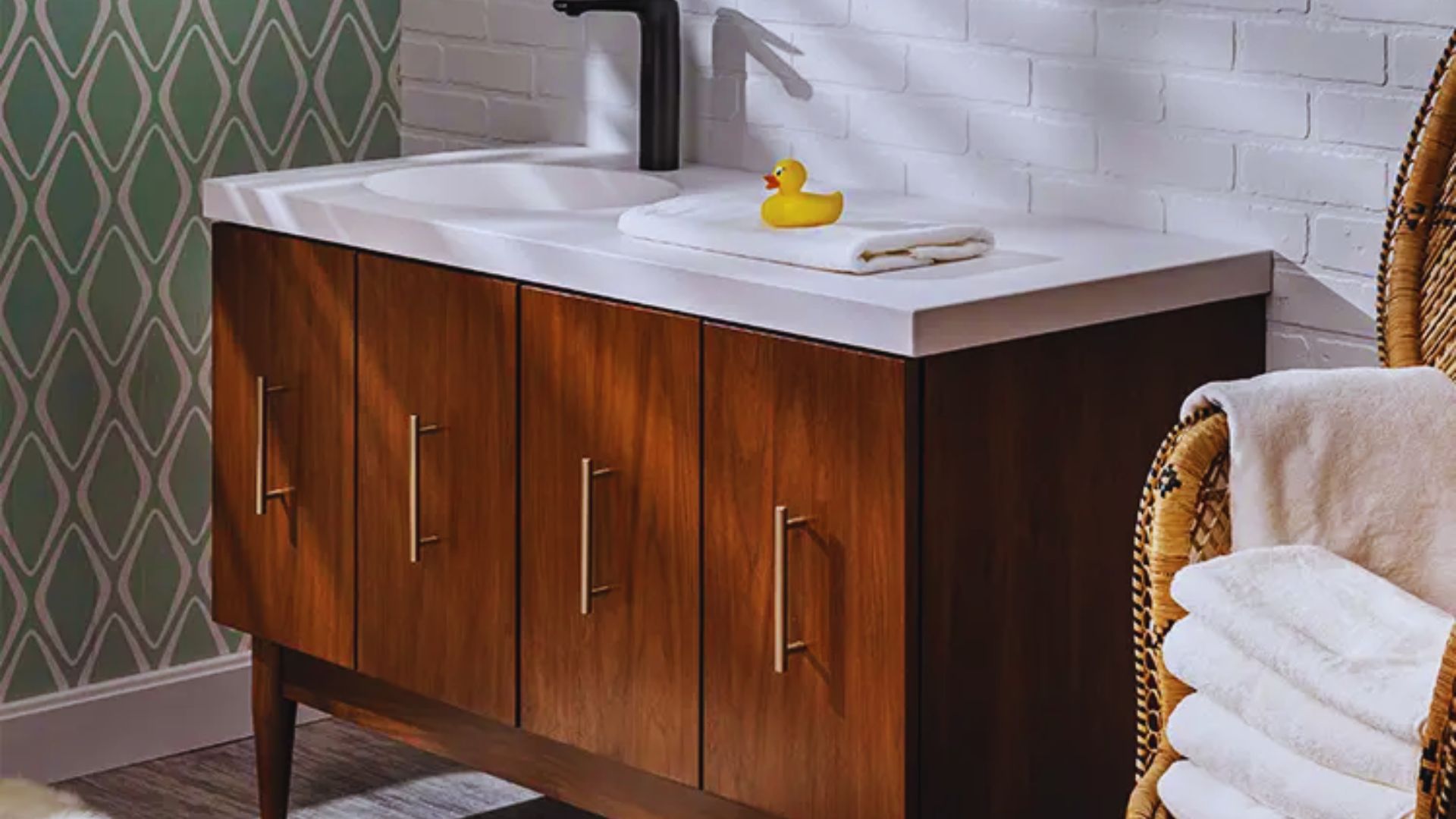
Several key factors determine which vanity size works best in your bathroom.
Bathroom Size and Layout:
Small bathrooms need compact 53 to 76 cm vanities to avoid feeling cramped. Large bathrooms can fit 122 cm singles or 183 cm doubles without overwhelming the space. Check door placement so your vanity doesn’t block the door swing.
Leave at least 38 cm clearance between fixtures. Long narrow bathrooms work better with single vanities, while square rooms can handle doubles or corner units.
User Needs and Accessibility:
Adults find 86 cm height comfortable, while taller people prefer 91 cm. Kids need lower 76 cm vanities or step stools. Elderly users benefit from heights that minimize bending.
Wheelchair users require 76 cm maximum height with knee clearance underneath. Choose dimensions based on who uses the bathroom most.
Storage Requirements:
Large vanities offer multiple drawers and cabinets for towels, toiletries, and supplies. Small vanities provide limited storage, so add wall shelves if needed.
Look for vertical storage, pull-out organizers, and built-in dividers in compact spaces. Deep drawers with dividers store more than shallow ones. Choose a size that fits what you need to store.
How to Measure Your Bathroom for a Vanity
Accurate measurements prevent costly mistakes. Follow these steps to measure correctly.
- Step 1: Choose the placement location. Decide where the vanity will sit. Consider plumbing locations and room flow.
- Step 2: Measure the width. Use a tape measure to find the available width along the wall. Measure from corner to corner or from one obstruction to another. Write this number down.
- Step 3: Measure the depth. Measure how far the vanity can extend into the room. Start at the wall and measure outward. Remember to account for door swing and walking space.
- Step 4: Measure the height. Check the distance from the floor to any windows, outlets, or other features. Standard vanity height is 86 cm, but confirm you have clearance.
- Step 5: Note obstructions. Mark any outlets, light switches, plumbing pipes, or heating vents. Your vanity needs to work around these.
- Step 6: Measure twice. Go through all measurements again. Even small errors cause big problems during installation.
- Step 7: Consider future changes. Think about plans to move plumbing or add features. This might affect your vanity choice.
Take photos of the space with measurements written on them. Bring these when shopping for your vanity.
Conclusion
I remember the sigh of relief when this vanity fit perfectly. Three simple measurements saved me from a potentially costly mistake. Now it is your turn toward getting it right.
Use your tape measure to determine the bathroom vanity dimensions in cm and develop a space suited to you and your daily habits. Need help with sizing?
Comment below if this was helpful. Share this information with others. They will remodel a bathroom.
Frequently Asked Questions
What is the standard depth for a bathroom vanity in cm?
Most bathroom vanities measure between 50 and 60 cm deep. This provides enough counter space without jutting too far into the room.
How wide should a double sink vanity be in cm?
A double sink vanity needs at least 152 cm width. For better comfort, choose 183 cm or wider so two people have adequate space.
What height should I choose for my bathroom vanity?
Standard vanity height is 86 cm for most adults. Go with 76 cm for kids or accessibility needs, or 91 cm for taller users.
Can I fit a vanity in a small bathroom?
Yes, compact vanities start at just 53 cm wide. Corner vanities also work well by using unused corner space efficiently.
Do I need a professional to measure for a custom vanity?
Yes, always hire a professional for custom vanities. Even small measurement errors cause expensive problems with plumbing, outlets, and installation.

